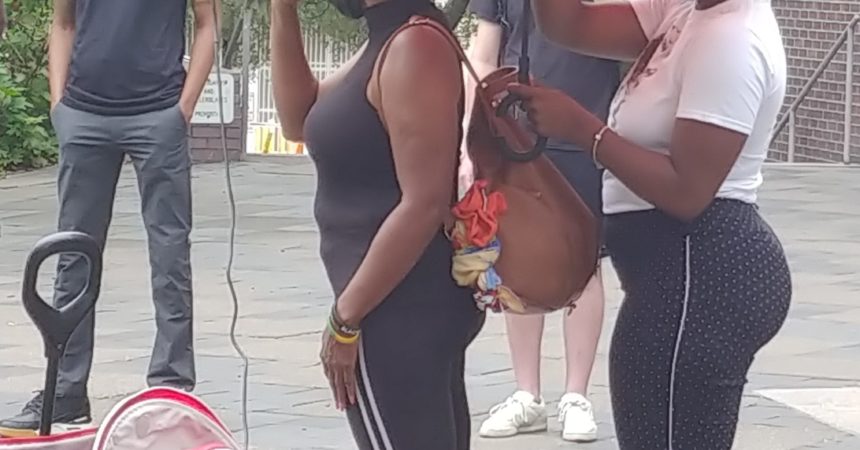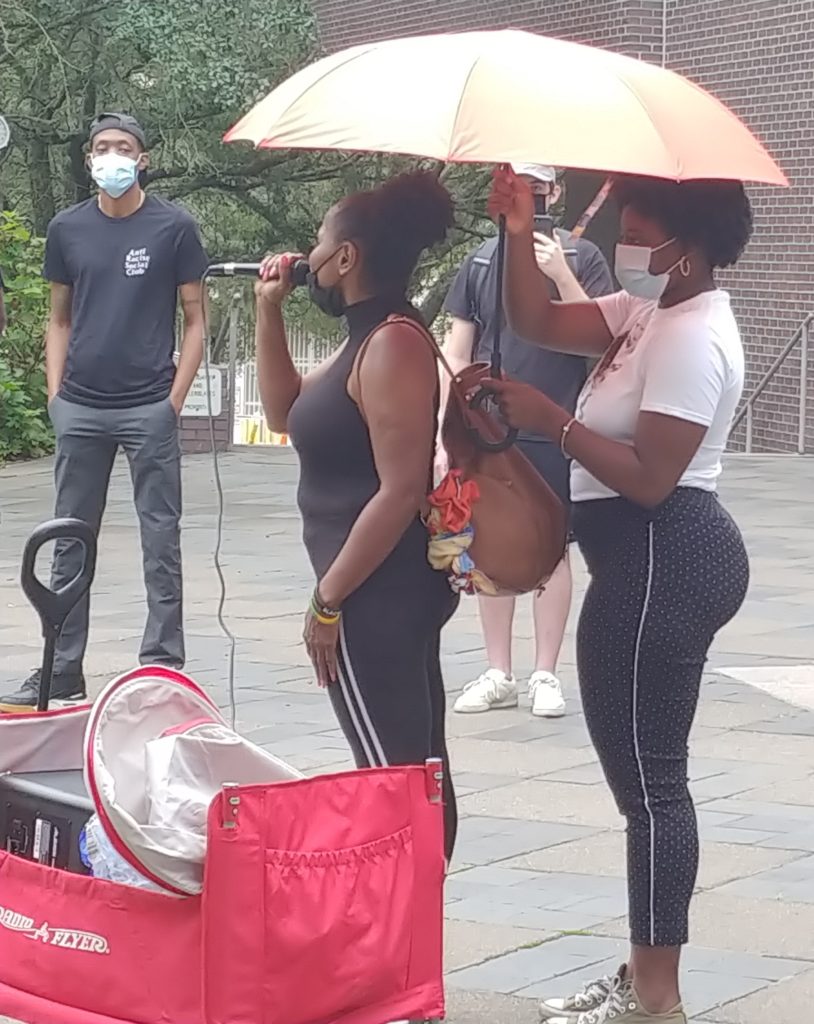
Rallying for a cause
Protesting has historically brought about slow but certain change for Blacks
By St. Clair Murraine
Outlook staff writer
Injustice and inequality were clearly among the concerns that brought protestors to the entrance of City Hall, a place they’d been many times before last Saturday.
The rally was advertised as being a day of action to stop repression of Black Lives Matter, talk about a Civilian Police Accountability Council (CPAC) and continuing a call for charges to be dropped against protestors known as “Tally 19” who were arrested during a Sept. 5 skirmish with law enforcement.
While those were the issues of the day, protestors have been speaking out about a lengthy list of civil rights issues. There isn’t an end in sight if the rally that brought together about 50 people in from of City Hall was any indication.
“We need to make sure that we continue to stand up,” said Regina Joseph, president of Tallahassee Community Action Committee. “We don’t give up. When we seem tired and may want to lose hope, never give up. We can make the world a better place. We can do that.”
Since wide-scale protesting began in May over the death of George Floyd in the custody of Minneapolis police officers, comparisons to protests of the 1960s have been frequent. Given the looting and burning around the country, there are concerns whether protesting in Tallahassee could rise to that level as seen in other Florida cities like Orlando and Tampa.

Photo by St. Clair Murraine
Gov. Ron DeSantis reacted to violent protest Monday when he announced the Combating Violence, Disorder and Looting and Law Enforcement Protection Act.
“Florida won’t tolerate rioting, looting or violence,” said DeSantis who has seen protestors in front the governor’s mansion.
He, however, was agreeable to peaceful protests.
“I encourage everyone to continue to be peaceful,” DeSantis said. “That’s really the name of the game.”
Violent protesting became a concerning in Tallahassee after a Sept. 5 protest over a grand jury verdict that cleared TPD officers involved in three shooting deaths. Law enforcement in full riot gear showed up and after a brief skirmish several people were arrested.
It remains a point of agitation for protestors.
“They’re throwing us in jail. Keeping us in poverty. Making us hungry. Shooting us,” said Trish Brown, a TCAC organizer and recent candidate for a city commission seat.
A voice in the crowd responded, “That ain’t right.”
TPD chief Lawrence Revell said the arrests stemmed from protestors assaulting officers. Law enforcement officers, who were in riot gear out of concern that participants in a Trump supporters rally could clash with protestors, were called in to break up the confrontation.
Protestors being arrested isn’t new or uncommon in Tallahassee, dating back to when students from FAMU and FSU staged sit-ins at Whites-only establishments. Woolworths on North Monroe Street was the target. Some were even arrested and decided to do jail time instead of paying a $300 fine.
Getting arrested today for protesting could be a lifetime stigma said, Delilah Pierre, communication officer for the Tallahassee Community Action Committee.
“It’s a lot more different today to get arrested and sent to jail,” Pierre said. “Before being sent to jail was bad but in some ways a badge of pride. But now being sent to jail is a real danger for protestors.”
Students who protested several decades ago in Tallahassee were led by Patricia Stephens Due. They also had the backing of civil rights activists like FAMU professor Charles Smith and Rev. C.K. Steele. Senior leadership is an obvious missing element of protesting in Tallahassee today, said Delaitre Hollinger, Executive Director of The National Association for the Preservation of African-American History & Culture, Inc.
“I think that’s the direct contrast from the protests that we have today and the protests of yesteryears,” said Hollinger, who is also a former president of the local chapter of the NAACP.
Non-violence protesting was also the norm. Several students had traveled to Miami for CORE meetings where they were trained how to protest without violence, Hollinger said.
The non-violence rule isn’t applied equally, said Pierre, mentioning instances where there has been violent protest without any arrests. The rule is different for Blacks, Pierre said.
“In truth, we can talk about non-violence all we want,” Pierre said. “We could talk about going from the standpoint of peace all we want, but we face the same repression as any group.
“We deserve to fight for our rights in the street; the right at the very least to show our discontent with our government that has repressed and killed us for years and years.”
While civil rights and justice for Blacks remain the focal point of protests, the call in Tallahassee is for more. One big ask is for the formation of a Civilian Police Accountability Council.
Given the results that protests has produced over the years, Hollinger said the changes that are being sought could come. For example, the right to vote followed the 1965 march in Selma, Ala., and the Civil Rights Act after the 1963 March on Washington.
But Pierre said celebrating those accomplishments is difficult because of inequities that Blacks are still experiencing.
“We talk about like these magnificent, great changes that happened in the 60’s, but the truth of the matter is even though the Civil Rights Act was passed, even thought the Voting Rights Act was passed, even thought major changes happened, Black people are in nearly the same economic condition as they were back then,” Pierre said. “There are a few Black people who were able to gain power and wealth, but for the most part most Black people are still poor. Most Black people are still being brutalized by the police in nearly the same way.”
Local protestors have to practice patience like those who marched in the 1960s, Hollinger said.
“No. I don’t think it’s too difficult to get change as a result of protest,” he said.
However, he said, finding a path to the outcome that protestors are seeking should begin with a conversation.
“We should have had a sit-down with the elected, the older people and the more-seasoned individuals and the younger people who we know are the leaders of these protests,” he said. “What I see is when we meet each other in the middle and we establish a common ground, we can get more done.
“This is not the 1950s and 1960s when had and all-White, all-male city commission. We are beyond those times and I think that we have an excellent city commission who is willing to sit down and willing to listen. We just need more over the table dialog as opposed to the protests. Now, protest is always good. I will never say that it isn’t. I think what we need right now is sitting down at the table and establishing a rapport with one another.”
Meanwhile, protestors seemed poised to wait for the call to the table as they carry out peaceful marches and rallies.
“Everybody’s life is precious,” Brown said. “We all get that. We don’t want anybody to get hurt. We don’t want to kill nobody. We are not out here trying to fight no one. We’re trying to lift people up. We are trying to save people’s lives. It’s a long road. It’s a hard road but we are going to keep on marching.”






